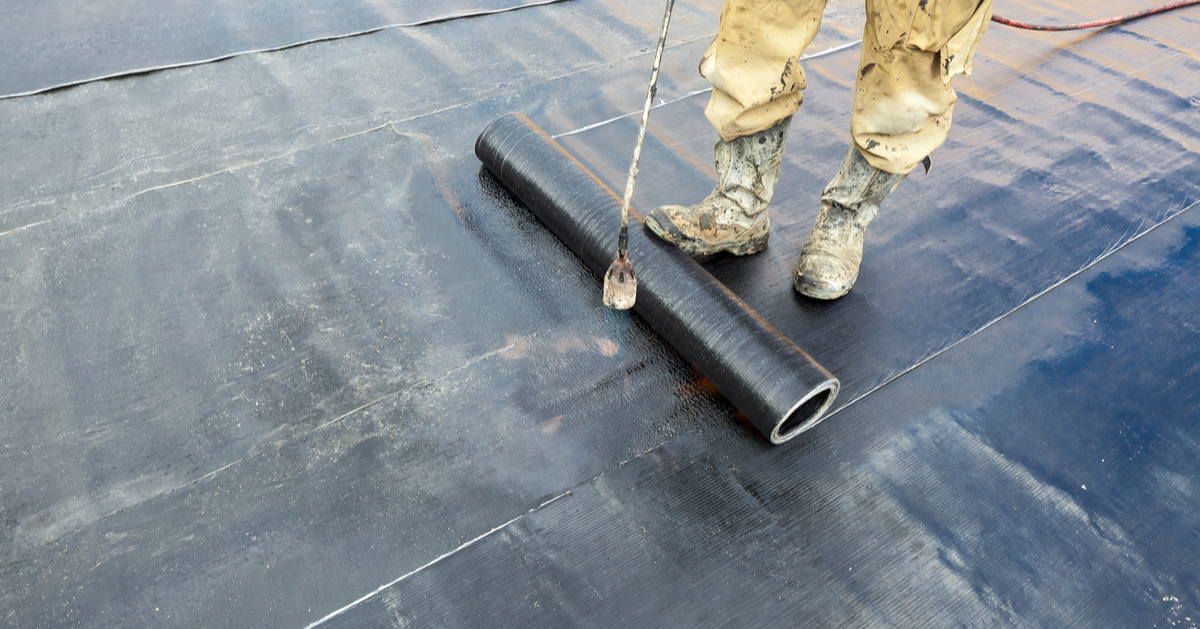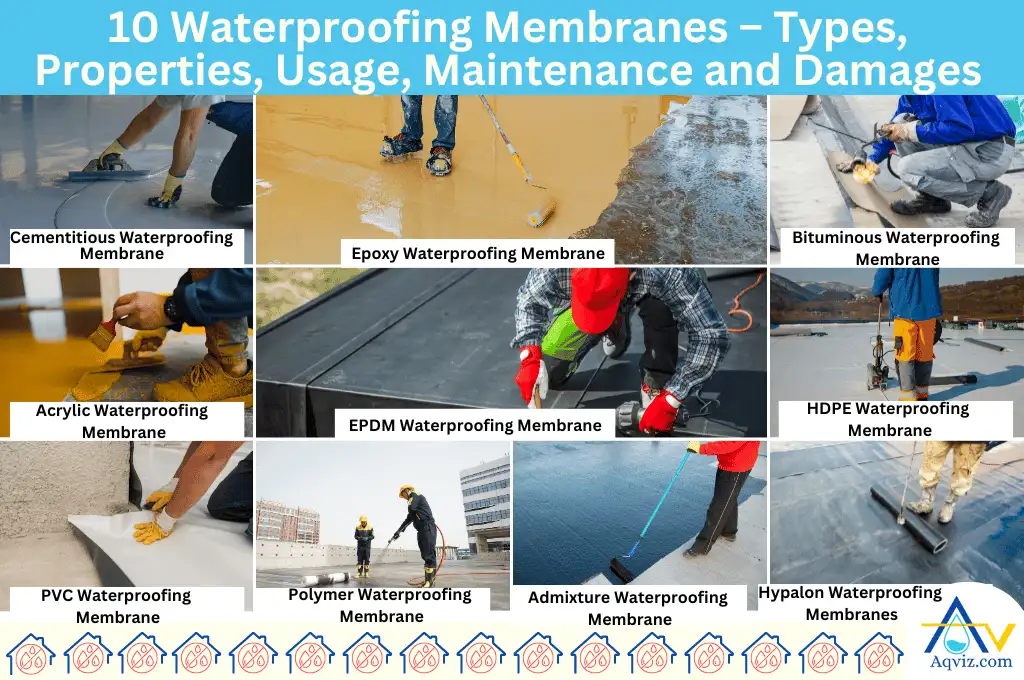Basement waterproofing Omaha: When Should You Do It?
Wiki Article
Types of Waterproofing: Exploring the Various Methods and Their Applications
Waterproofing is a vital aspect of construction and maintenance. It protects frameworks from the detrimental effects of water damages. There are numerous methods available, each with its unique applications and benefits. From membrane systems to cementitious services, recognizing these choices is necessary for reliable implementation. The choice of waterproofing method can significantly influence resilience and durability. Exploring these various strategies reveals their distinct benefits and possible challenges, triggering more factor to consider of ideal solutions.Membrane Layer Waterproofing Equipments
Membrane layer waterproofing systems function as an essential obstacle versus water breach in numerous frameworks. These systems normally contain slim sheets made from products like rubber, polycarbonate, or asphalt, which are put on surfaces to stop wetness penetration. They can be set up over or below quality and are especially reliable in areas susceptible to high water direct exposure, such as basements, roofing systems, and foundations.The installation procedure involves cleaning up the substratum, using adhesives or guides, and specifically suitable the membrane layer to guarantee complete insurance coverage. Membrane layer systems can be either completely stuck, mechanically attached, or laid loose, relying on the particular demands of the task. They provide sturdiness and versatility, fitting structural activities without endangering their waterproofing abilities. In addition, these systems can be reinforced with extra layers for enhanced security. Eventually, membrane layer waterproofing systems are essential for guarding structures versus water damages and keeping long-term integrity.Liquid-Applied Waterproofing Coatings
Liquid-applied waterproofing layers offer a versatile remedy for securing surfaces from water infiltration - Water Solutions Omaha. These coverings consist of liquid materials that, when used, form a smooth, versatile membrane. Their flexibility enables application on different substrates, including concrete, metal, and timber. The coverings can be utilized in varied environments, from domestic to commercial setups, making them appropriate for roofs, foundations, and below-grade structures.One considerable benefit of liquid-applied coverings is their ability to adapt uneven shapes and pass through splits, developing a durable obstacle against wetness. They commonly display outstanding bond residential or commercial properties and resistance to UV radiation, ensuring long life and durability. Additionally, the application process is normally uncomplicated, permitting quick installment and reduced labor expenses. This technique likewise minimizes the threat of water merging, as the constant layer properly directs water far from prone locations. Overall, liquid-applied waterproofing finishings are a reliable option for complete water protectionCementitious Waterproofing Solutions

Cementitious waterproofing solutions use a robust alternative for structures needing dependable moisture protection. These systems mainly utilize a blend of concrete, sand, and chemical additives to develop a water resistant obstacle. They are commonly applied to surface areas such as concrete wall surfaces, structures, and floors, offering a resilient, lasting defense versus water intrusion.One of the vital advantages of cementitious waterproofing is its ease of application; it can be used making use of a brush, roller, or spray, making it ideal for numerous task sizes. In addition, this approach is compatible with numerous surfaces and can commonly be made use of combined with other waterproofing techniques.Cementitious services are specifically effective in atmospheres where water direct exposure is a problem, such as cellars or below-grade frameworks. Their superb adhesion residential properties guarantee that they bond well with substratums, offering a solid and impermeable layer versus dampness infiltration.
Bentonite Waterproofing
Bentonite waterproofing is an extremely efficient technique that utilizes sodium bentonite clay to create an all-natural obstacle versus water. This method makes use of the unique properties of bentonite, which increases upon call with water, sealing any type of possible leakages and preventing moisture infiltration. It is generally made use of in various applications, including foundation wall surfaces, passages, and retaining wall surfaces, where water resistance is essential.Bentonite can be applied in numerous forms, such as panels or coverings, offering adaptability in installation. Its ability to self-seal makes it an appealing alternative for areas subject to moving dirt or changing water levels. Additionally, bentonite waterproofing is environmentally friendly, as it is a natural material that does not present harmful chemicals into the surroundings.Drain and Outside Waterproofing Systems
Effective waterproofing often involves a mix of methods, consisting of drain and external systems. Drainage systems, such as French drains pipes and sump pumps, are made to reroute water away from structures, reducing hydrostatic pressure versus structures. These systems are important in avoiding water accumulation that can lead to structural damages and mold and mildew growth.External waterproofing, on the other hand, involves using safety obstacles to the building's exterior. Methods such as the installation of waterproof membrane layers, coatings, or sealers can assist avoid water infiltration. This method not just secures the structure yet also improves the general toughness of the structure.Together, water drainage and exterior waterproofing systems develop an extensive remedy to take care of water effectively. By carrying out these strategies, building proprietors can protect their investments versus the damaging effects of moisture, making certain long-term security and safety for their structures.Often Asked Concerns
Just how Do I Select the Right Waterproofing Technique for My Project?
Picking the ideal waterproofing method relies on factors such as job kind, ecological conditions, budget plan, and preferred durability. Examining these facets enables educated decisions tailored to specific requirements and demands.
Can Waterproofing Be Applied in Cold Weather Condition Conditions?
Waterproofing can be used in cool climate conditions, yet it requires specific products and techniques. Cold temperature levels may impact curing times and adhesion, requiring mindful selection of products created for low-temperature application.
What Are the Common Indications of Waterproofing Failing?
Usual signs of waterproofing failure include noticeable water discolorations, peeling off paint, damp odors, mold development, and splits in walls or foundations. Drainage & waterproofing company Omaha. These indications suggest that moisture is penetrating the barrier, jeopardizing its efficiencyThe Length Of Time Does Waterproofing Last Prior To Requiring Maintenance?
The durability of waterproofing differs, usually lasting in between 5 to ten years. Aspects such as worldly top quality, ecological problems, and upkeep methods influence its toughness, demanding regular examinations to assure effective protection against water Water Solutions invasion.Exist Eco-Friendly Waterproofing Options Available?
The inquiry of eco-friendly waterproofing choices discloses an expanding interest in lasting products (Yard drainage Omaha). Different natural materials, such as plant-based sealants and recycled products, provide efficient services while reducing environmental impact, attracting eco conscious customersReport this wiki page